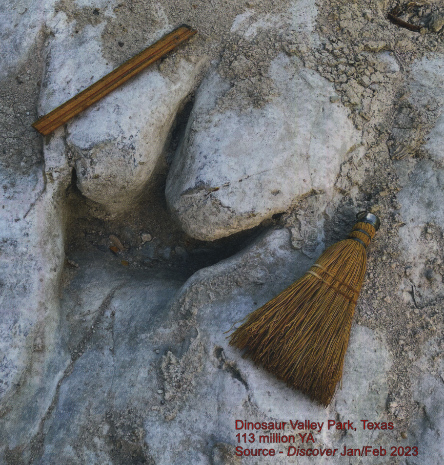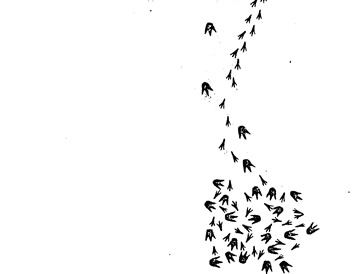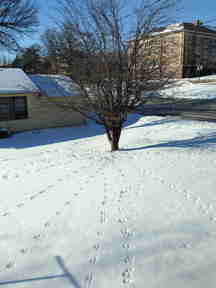
What's my tracks?
Observations of recent & ancient tracks
Observations can create different stories!
Introduction
A challenge activity that uses a set of three pictures of dinosaur prints to spark discussion about observations and inferences when making explanations. Inferences as explanations based on observations of the tracks to explain how prehistoric animals might have made them.
This photo was taken recently.
However, archaeologists or paleontologists, have discovered ancient fossilized tracks.
One such set of tracks are described in the National Geographic article:
Incredible details of 10,000-year-old trek revealed in fossil footprints.
The prints are inferred to be a prehistoric traveler who was carrying a child across a muddy landscape and returned a few hours later empty-handed.
Other sets of tracks have also been found.
Here are a couple from Texas!
One really big footprint
Found in Texas and dated to 113 million years ago (YA).

A set of footprints
These were also found in Texas and dated to 113 million years ago (YA).

Try you skill with the following activity!
Challenge :
Explain how a set of ancient footprints was created.
Linked below are a set of three diagrams of even older animal tracks:
Presented as three views.
Observe view 1, state your observations, and then make your inferences about what might have happened all those years ago. Then repeat the process with view 2 added. And then with view 3 added to complete the set.
- First view
- Second view added
- Third view to complete the set
- Hints - review to see thoughts others have had about what might have happened hundreds of millions of years ago.
Check out more:

View 1 of ancient animal (dinosaur) tracks

What are your observations?
What are your inferences?

View 1 & 2 of ancient animal (dinosaur) tracks


What are your observations?
What are your inferences?

Views 1, 2, & 3 of ancient animal (dinosaur) tracks

What are your observations?
What are your inferences?

Hints! for all three views!
Challenge: Sort them by views!
Sample observations!
- Marks are on the surface of sedimentary rock.
- Some marks are bigger than others.
- Marks are narrower on one side than the other.
- Marks have indents on one end.
- Marks on one end of each trail are spaced farther apart than on the other end.
- The smaller tracks are intermingled with the larger ones where the tracks are a jumble.
Sample inferences!
- They are footprints.
- Footprints of an animal.
- There are two different animals.
- Larger tracks infer a larger animal.
- Smaller tracks infer a smaller animal.
- They are going in one direction, until the jumble of tracks.
- They speed up at one end.
- They arrived at about the same time.
- They arrived at different times.
- They meet.
- They fight.
- They feed at the sight where the prints are a jumble.
- One eats the other and leaves.
- They arrive separately and feed on whatever was previously at the site (berries or dead animal on the bank of a flooded stream). One walks away and the other flies or swims away.
- The jumble of tracks includes both sets, which would indicate the smaller animal wasn't killed by the bigger animal as its tracks should have stopped where the larger tracks first intersect the smaller tracks.
Enjoy!
